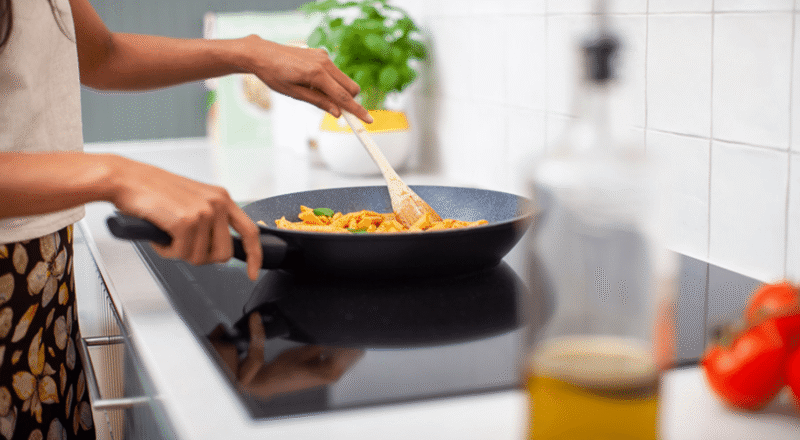Cooking with cast iron is a beloved tradition in many kitchens around the world. However, one of the key challenges is mastering temperature control in cast iron cooking. This skill is essential for achieving perfect results, whether you’re searing a steak, baking bread, or making pancakes. In the following sections, we will explore the ins and outs of temperature management when using cast iron cookware.

The Importance of Temperature Control
Understanding the importance of temperature control is the first step towards becoming proficient in using cast iron cookware. Proper heat management ensures your food is cooked evenly and maintains its flavor and texture. It also prevents the common issue of food sticking to the pan, which can be particularly frustrating for both novice and experienced cooks.
Understanding Cast Iron’s Unique Properties
Cast iron is renowned for its ability to retain heat. This property makes it ideal for tasks that require steady temperatures, such as searing meat or simmering sauces. However, this heat-retention ability also means that it takes longer to adjust to temperature changes. Therefore, mastering temperature control involves understanding how long it takes for your cast iron pan to heat up and cool down.
How to Preheat Your Cast Iron Cookware
Preheating is a crucial step when cooking with cast iron. A well-preheated pan ensures even cooking and helps in developing a natural non-stick surface. To preheat, place your cast iron on a stove set to low to medium heat and allow it to warm gradually. This process can take up to 10 minutes, depending on the size and thickness of the pan.
Testing Your Pan’s Temperature
To test if your pan is ready, sprinkle a few drops of water onto the surface. If the water sizzles and evaporates immediately, your pan is adequately heated. If the water bubbles and dances around the pan, it may be too hot. Adjust the heat accordingly to maintain the desired cooking temperature.
Maintaining Heat During Cooking
Once your pan is preheated, maintaining the right temperature is crucial. This involves adjusting the heat source as needed and being mindful of heat loss when adding ingredients. When cooking with cast iron, it’s often best to cook on medium heat for most recipes, allowing the pan’s heat retention properties to do the work.
Using Induction Cooktops with Cast Iron
Induction cooktops are becoming increasingly popular due to their energy efficiency and precision. Cast iron works well with induction because it is magnetic and heats evenly. For more on how cast iron performs on induction, visit this cast iron and induction guide.
Temperature Control Tips for Specific Dishes
Different dishes require different temperature settings. For example, searing meat requires a high temperature to create a crust, while baking in cast iron might require a more moderate and consistent heat. Learning how to adjust temperatures for specific dishes is a skill that can drastically improve your cooking results.
Searing Meat
For a perfect sear, heat your pan on high until it’s very hot before adding the meat. This creates a delicious crust while keeping the inside juicy. For more, visit our searing meat guide.
Making Pancakes
When making pancakes, it’s crucial to maintain a steady, medium heat to ensure they cook through without burning. Learn more tips on our pancake cooking page.
Common Mistakes and How to Avoid Them
One common mistake is overheating the pan, leading to burnt food and a smoky kitchen. Another is not preheating the pan adequately, which can result in uneven cooking. By understanding these pitfalls and how to avoid them, you can make your cast iron cooking experience more enjoyable and successful.
Adjusting to Environmental Factors
Environmental factors such as humidity and altitude can affect cooking times and temperatures. Being aware of these variables and adjusting your cooking techniques accordingly is part of becoming proficient in using cast iron cookware.
Cleaning and Maintaining Your Cast Iron
Proper cleaning and maintenance are essential for the longevity of your cast iron cookware. After cooking, allow your pan to cool before washing it with warm water and a brush. Avoid using soap, as it can strip the seasoning. Dry the pan thoroughly and apply a thin layer of oil to prevent rust.
FAQs
How do I know if my cast iron pan is too hot?
Sprinkle a few drops of water onto the pan. If they sizzle and evaporate immediately, the pan is hot enough. If they bounce around, it might be too hot.
Can I use cast iron on an induction cooktop?
Yes, cast iron is compatible with induction cooktops. Its magnetic properties make it an excellent choice for even heating. Learn more at this induction cooking page.
What should I do if my food sticks to the pan?
If your food is sticking, it might be because the pan wasn’t preheated properly or the seasoning is wearing off. Ensure the pan is heated correctly and consider re-seasoning if needed.

Conclusion
Mastering temperature control in cast iron cooking is an invaluable skill that enhances your culinary experiences. By understanding the unique properties of cast iron and learning how to adjust your cooking techniques accordingly, you can achieve delicious results with ease. Happy cooking!
This article contains affiliate links. We may earn a commission at no extra cost to you.

